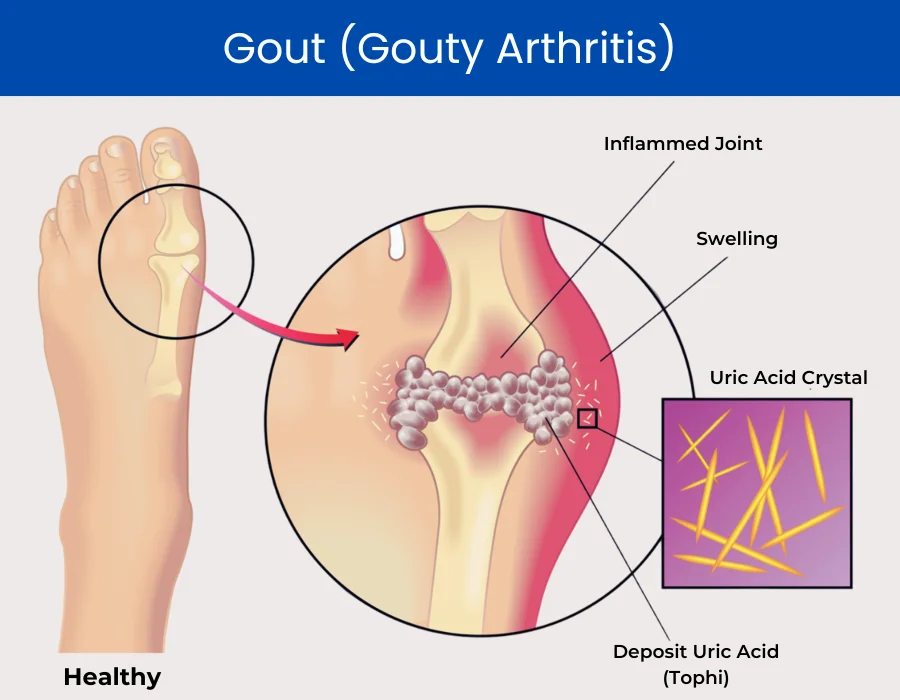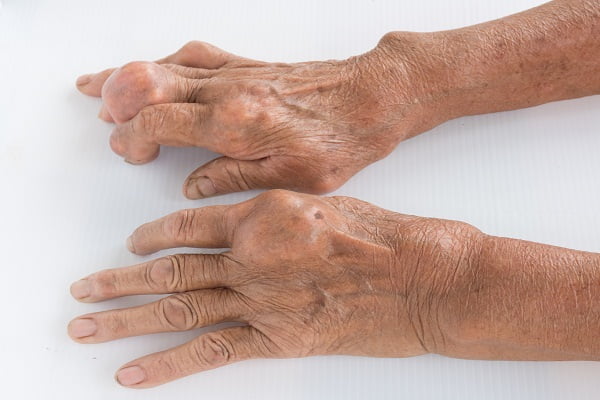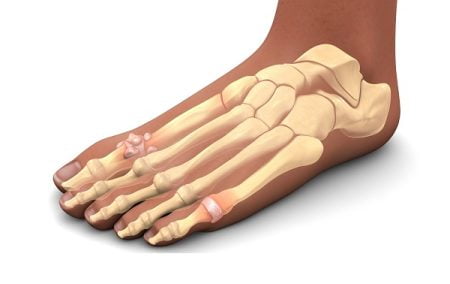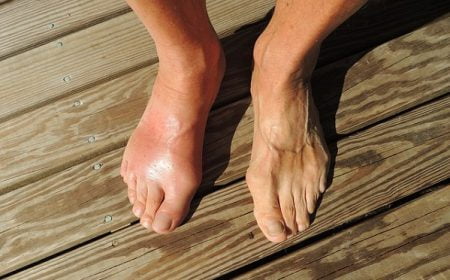What does an acute gout attack look like?
Gout is a medical condition and a type of arthritis which causes discomfort and pain in the joints. Its typical symptoms are characterized by the sudden onset of severe pain, swelling, warmth, and redness of a joint. The clinical presentation of gout is not faint but marked and some are mimicked by a bacterial infection.
Most commonly involved joint with gout is big toe which is called podagra. However, it can attack any joint and the number of joints affected may vary as well, with the most frequent sites being such as the feet, ankles, knees, and elbows.
An attack of acute gout reaches its peak after 12- 24 hours of its onset, and then slowly resolves even without a treatment. Approximately 7-14 days are required for full recovery with treatment.
What does a chronic gout attack look like?
Some patients experience acute gout attacks which do not exceed from 1-2 per year in number and in some case 1-2 times in a lifetime.
However, for some patients, gout is a chronic, recurrent problem with a number of severe attacks at very frequent intervals and without complete settlement of inflammation and other conditions.
This form which is referred as chronic gout is capable of causing serious joint destruction and deformity and may be confused with arthritis such as rheumatoid arthritis. In a chronic gout attack, a characteristic uric acid tophi (hard, uric acid deposits under the skin) are also present which causes bone and cartilage destruction.
Tophi are diagnostic features for chronic tophaceous gout. It can be found around joints, or at the pinna of the ear. With treatment, tophi can be dissolved and will completely disappear over time.
More: Gout: Causes, Symptoms, Diagnosis, Prevention, Treatment
Gout and Asymptomatic Hyperurecemia
Almost all the patients with gout have hyperuricemia – a condition of high levels of uric acid in the blood. But not all individuals having hyperurecemia are necessarily to have gout.
In many cases, individuals have elevated levels of uric acid in their blood circulation from long before the onset of a gout attack; therefore, it is advised not to opt for the treatment of gout in the absence of any clinical sign and symptoms of gout. This condition is generally referred as ‘asymptomatic hyperuricemia’.
With an increased level of uric acid in the blood, the risk of gout development also increases but many patients get gout attacks even with “normal” levels of uric acid and some will never have an attack despite very high levels of uric acid.
How to know if you have gout?

As bacterial infection mimics the clinical features of gout and can be very similar, it is important to rule out any doubt of other medical conditions by examining the fluid from joints for the presence of uric acid crystals. Since gout and infection can co-exist in the same joint, a precise consideration should be made to distinguish between them by sending fluids for culture.
Presence of tophi is used as a diagnostic feature for the presence of gout even if you have not experienced any gout attack either acute or chronic. Tophi can be aspirated and can be visualized under polarized microscopy as well to confirm a diagnosis of chronic tophaceous gout.
Elevated levels of serum uric acid concentrations may be another supportive evidence for the diagnosis of gout, but the presence of hyperuricemia alone doesn’t confirm the diagnosis of gout. Similarly, normal uric acid concentrations do not rule out the diagnosis of gout as the level of serum uric acid can be normal during a gout attack too.







